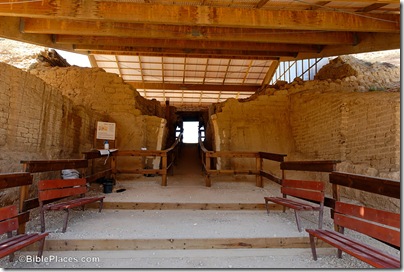Fifteen years ago, virtually no one could see the Dead Sea Scrolls. In a few years, maybe everyone will be able to, without leaving their home. From the NY Times:
In a crowded laboratory painted in gray and cooled like a cave, half a dozen specialists embarked this week on a historic undertaking: digitally photographing every one of the thousands of fragments of the Dead Sea Scrolls with the aim of making the entire file — among the most sought-after and examined documents on earth — available to all on the Internet.
Equipped with high-powered cameras with resolution and clarity many times greater than those of conventional models, and with lights that emit neither heat nor ultraviolet rays, the scientists and technicians are uncovering previously illegible sections and letters of the scrolls, discoveries that could have significant scholarly impact….
The entire collection was photographed only once before — in the 1950s using infrared and those photographs are stored in a climate-controlled room since they show things already lost from some of the scrolls. The old infrared pictures will also be scanned in the new digital effort.
“The project began as a conservation necessity,” Ms. Shor explained. “We wanted to monitor the deterioration of the scrolls and realized we needed to take precise photographs to watch the process. That’s when we decided to do a comprehensive set of photos, both in color and infrared, to monitor selectively what is happening. We realized then that we could make the entire set of pictures available online to everyone, meaning that anyone will be able to see the scrolls in the kind of detail that no one has until now.”
The process will probably take one to two years — more before it is available online — and is being led by Greg Bearman, who retired from the NASA Jet Propulsion Laboratory. Data collection is directed by Simon Tanner of Kings College London. Mr. Bearman is also using a specially made, $75,000 spectral camera that can produce a photographic image of previously illegible sections.
The rest of the story is here.
HT: Joe Lauer

